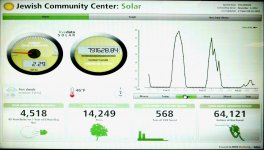electro7
Senior Member
- Location
- Northern CA, US
- Occupation
- Electrician, Solar and Electrical Contractor
Hi,
I wanted to make sure I was thinking about this correctly.
Voltage drop calculations are based on the max amperage a conductor will carry, and not on the max amperage plus the 125% multiplier for continously load, correct?
Voltage drop is also based on the temperature rating of the conductors being used and not on the termination temperature rating, correct? In other words, I use a calculator that asks for the conductor temperature rating. When using thwn-2 I enter 90° in that input even if I am limited by the termination rating of 75°, correct?
This is for a solar PV installation where the solar is considered a continuous load and the max output current of the inverter needs to be multiplied by 125% for conductor ampacity calculations.
Sent from my SM-G998U using Tapatalk
I wanted to make sure I was thinking about this correctly.
Voltage drop calculations are based on the max amperage a conductor will carry, and not on the max amperage plus the 125% multiplier for continously load, correct?
Voltage drop is also based on the temperature rating of the conductors being used and not on the termination temperature rating, correct? In other words, I use a calculator that asks for the conductor temperature rating. When using thwn-2 I enter 90° in that input even if I am limited by the termination rating of 75°, correct?
This is for a solar PV installation where the solar is considered a continuous load and the max output current of the inverter needs to be multiplied by 125% for conductor ampacity calculations.
Sent from my SM-G998U using Tapatalk



